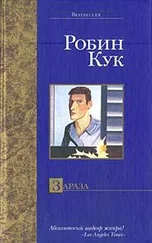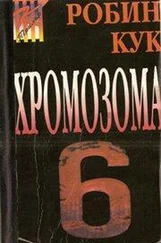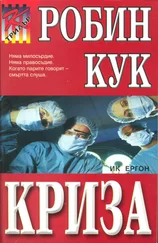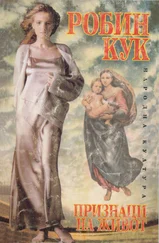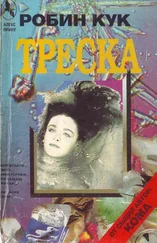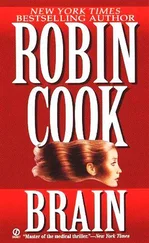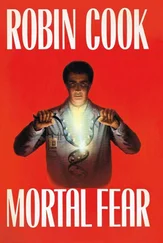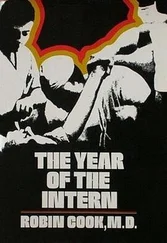“I’m afraid I’m going to have to cut this short,” Aria said. She glanced down the bar and raised her hand with the idea of getting Alex’s attention.
“I think finding this boyfriend will be rather easy because we will have both the child’s DNA and the mother’s. That means we already have half the father’s DNA.”
Aria lowered her hand and looked back at Madison. “That might be correct,” Aria said. “But that still leaves one and a half billion base pairs that are unknown.”
“Yes, but there are some clever tricks to fill that in by using tools developed by the commercial DNA companies and aided by websites that are called open databases. Let me explain: When you send in your saliva sample to a company like Ancestry dot com, what you get back is called a kit. It is not your DNA completely sequenced, although maybe in the future it will be. But for now, it’s your particular collection of varying nucleotides at various precise locations spread through your entire genome. These precise locations are called SNPs, standing for single-nucleotide polymorphisms. It is sort of like a fingerprint in chemistry.”
“I understand all this,” Aria said with a bit more interest. Madison seemed to know what she was talking about. Aria had never thought about the idea of finding someone by figuring out what their DNA was from close relatives. She’d always thought that such a process was unidirectional, the way the Golden State Killer had been found, by having his DNA to start with.
“Of course, you know most of this stuff about DNA since you are a doctor,” Madison said. “I’m sure you know more about the nuts and bolts than I. At the same time, I can tell you’re not up on the latest about what genealogical DNA is capable of doing. These days there are some wild tricks that have been developed, particularly by companies like GEDmatch dot com. One’s called phasing, which separates the child’s DNA into DNA obtained only from the mother and DNA only from the father into new kits. There is even a really cool one that involves making a manufactured kit for the ‘evil twin,’ meaning an artificial kit of the DNA the real child didn’t get from the parents.
“But that’s getting ahead of ourselves. All you have to understand at the moment is that these new manufactured ‘phased’ kits can also be used to find ancestral matches. In Kera’s case we will only be interested in matches from the paternal side, which is why the phased kits are helpful. And if paternal matches are found that are closer than third cousins, chances are we will be lucky, especially if these matches have made the effort to construct family trees. If we end up getting even closer matches, such as siblings, half-siblings, parents, or aunts or uncles, even first cousins, it would make finding him a piece of cake.”
“Really?” Aria said, her mind in a swirl. For several beats she stared at Madison. What she was hearing was opening up a whole new possibility that had not occurred to her, and she struggled to put it into context. “This means we’ll have to have kits made for both Kera and her child by any one of the commercial DNA companies.”
“Right on,” Madison said with building enthusiasm. “And the more companies we use, the greater the chances for matches to be found. I’m going to turn you into a convert, I’m sure of it.” She let out a little laugh of satisfaction at Aria’s response. “What I’ve learned studying all this stuff is that on average a person has about 850 relations who are third cousins or closer. Just to remind you, third cousins share great-great-grandparents. Now, don’t be discouraged by thinking we’ll have to be sorting through 850 people. No way. By guessing the mysterious boyfriend’s age, we can probably halve that number. Then by excluding female matches, we can halve it again. And finally, restricting the matches to the New York City area, we’ll be halving it again.”
“So, you think we’d end up with a hundred people or so?” Aria questioned with renewed discouragement. Trying to narrow down a group of a hundred people in a city like New York would be a monumental task even for a team of professional investigators.
“No, no,” Madison said. “Probably less than twenty. Restricting the matches by age narrows it more than fifty percent, a lot more. And if there’s a close match like a sibling, a parent, or an aunt and uncle, then we’d be looking at a lot less than five or six people. It might only be one person. Bingo! We got the bastard.” She smiled. “All this excites me because it will hopefully provide some redemptive value. I’ll feel like I’m doing something for Kera by finding this dude, even if it’s too late to save her.”
“When do you think we can start?” Aria said. Some of Madison’s excitement was beginning to rub off on her.
“Tomorrow,” Madison said. “Why not? I’ll find out what the commercial DNA companies would like for samples since we won’t be able to send saliva, which is what they usually use.”
“I’m sure I can get body fluid or tissue samples from both the mother and the fetus. You’ll have to let me know what they want.”
“That reminds me,” Madison said. “What was the sex of the fetus?”
“It wasn’t yet definitive,” Aria said. “We estimated the age to be around ten weeks. At that stage it’s not easy to tell, since the forming penis and clitoris are around the same size until about fourteen weeks. If I had to guess, I’d say male.”
“It would be a big help if it were a male,” Madison said.
“Why is that?”
“Because the Y DNA is inherited only from the paternal side.”
“Even I know that, because it is the Y chromosome that determines the male gender. Why is that any better than the autosomal DNA for genealogy?”
“It’s not better, it’s just different and additive,” Madison said. “But mainly because it can provide a surname. If we can determine the proper family name, the field of significant matches narrows decidedly, provided there wasn’t anything to mess things up like an adoption.”
“Why would an adoption mess things up?” Aria asked.
“The surname changes but the Y chromosome doesn’t. It can really cause a problem when trying to construct family trees, and it is family trees that we’ll need to use if we don’t get a really close match right away, which we probably won’t. There’s too much chance involved.”
“Okay,” Aria said. It was progressively apparent to her that she needed to read up on genetic genealogy. She’d not known it was as complicated as it seemed to be, although as a doctor she should have. Having studied biology she knew about chromosomal recombination, which was one of the main sources for heritable diversity. “What about mitochondrial DNA?”
“If we had the father’s DNA and were trying to reconstruct the mother’s, then mitochondrial DNA would be helpful. As you know, it is only inherited along the maternal line because the sperm doesn’t contribute mitochondria. All the mitochondria come from the ovum.”
“Of course,” Aria said. She felt a twinge of embarrassment for asking her question and appreciated Madison for not calling her on it. “Obviously I need to get myself up to speed on all this genetic genealogy. Are there any particular books that you’d recommend?”
“Oh, yes,” Madison said. “There are two, actually. The one that’s more general is called The Family Tree Guide to DNA Testing and Genetic Genealogy by Blaine Bettinger. The other one, which will be more helpful for our search, is The Adoptee’s Guide to DNA Testing by Tamar Weinberg. Adoptees have been using genetic DNA to search for their natural parents from the very beginning of DNA genealogy with improving success. The other group of people who have surely benefited from genetic genealogy’s developing power are those who have been conceived with donor sperm. What this group in particular has learned over recent years will help us a lot since that is essentially what we’re doing, and there are a number of websites who might be willing to help us.”
Читать дальше

